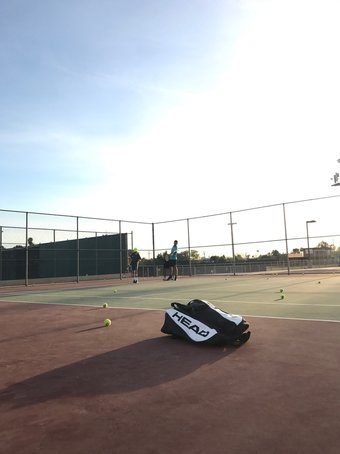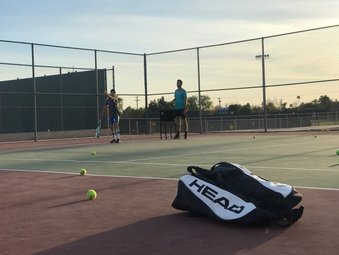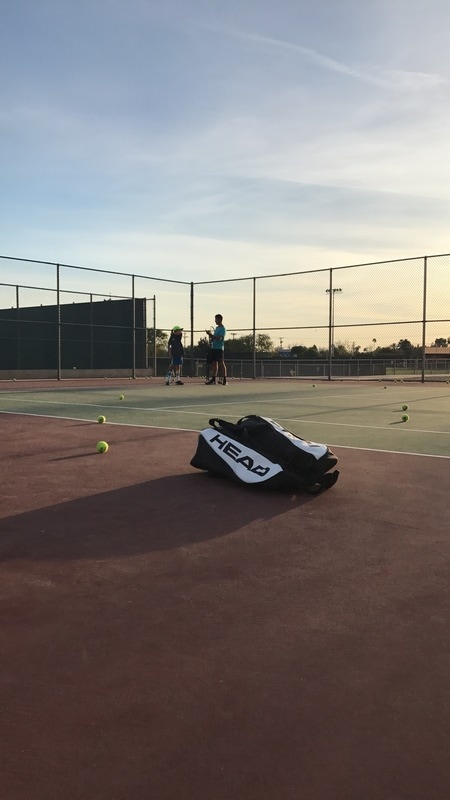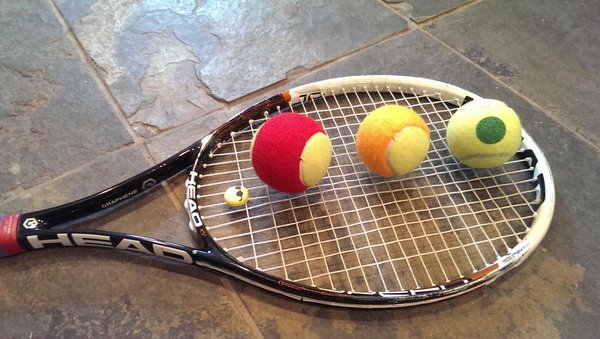|
From a spectator's view, tennis seems such a simple sport: Ball comes to you; hit it over the net. From the sidelines, it's easy to misunderstand—or question—what's happening on the court. Why didn't Johnny hit the ball in? How could Sarah miss that seemingly easy shot? Why couldn't Max move faster to get to that ball? My kid is far better than that other player, so why did she lose? It's really easy to coach for what has just happened. But, hindsight is what sports commentators get paid to do. Not coaches.
Contrary to what it seems, tennis is quite a complex sport. Technically, you have to learn a variety of shots, each with a number of nuances, such as spins. After that, you have to learn how to position shots (direction and distance), manage the pace, and control movement (the ball's, your opponent's, and your own) to allow yourself the best opportunity to win points. Then, there's strategy. Generally, what is your game plan to leverage your strengths and expose your opponent's weaknesses? Now, successfully do all of this with a complicated scoring system, in which you could lose the match even if you actually win more points! Given the complexity of the sport, coaches cannot get lost in the Land of Hindsight. If you focus on the fundamentals needed to be successful, the noise created by hindsight is easy to filter out. It's the coach's role to build the biomechanics of all the strokes, teach tactics and match strategy, bolster mental conditioning, and inspire the kids to be the best players they can. So what is the parents' role? I believe the parents have the hardest job. It's not easy to see your child make a mistake or lose a match he or she should have won, and not get caught up in the technical and tactical things. But, if a parent is busy talking tactics and shot errors, who's providing the emotional support for the player? Love and encouragement resonate a lot more than analysis of double faults or missed shots. Everyone has an important role to play in the development of an aspiring player—player, coaches, and parents. Kel and I work hard to handle all of the duties that come with wearing the "coach" hat. When mom and dad wear the "supportive parent" hat, together we can provide all the support a player could need. Finally, when the player embraces his or her role—appreciate the coaching and parental support, work hard, and have fun—we have a winning formula. You never stop learning in this sport. There is always something to correct, change, or improve (Roger Federer even has a coach, right?). I love this sport for all the challenges it brings, both on and off the court. Thanks for reading.
0 Comments
Kel and I regularly attend junior tournaments to support our players and check on their progress in competitive matches. We enjoy seeing the kids in action, and talking with the parents, with whom we don't get much time during the week because we are on court with the kids. We get asked lots of questions, ranging from how many times a week should a child play, to what is the best racquet for a junior player, and why are we such big fans of the Red/Orange/Green/Yellow (ROGY) ball progression.
Since Kel and I started coaching (nearly 20 years ago!), the approach to teaching young tennis players has changed. The systematic use of the ROGY Balls, and the developmental steps represented by each color, allows coaches to build the fundamental skills needed to take a player to the highest level possible. Using smaller courts, softer balls, and racquets designed for the size and strength of young players, you can successfully introduce kids to the sport at a younger age, and continuously adapt the game as they grow, physically and skills-wise. In addition to appropriate equipment, the structure of training needs to be tailored for children. Long lines with kids waiting 2-3 minutes to hit one ball? It doesn't work. Practice needs to have a purpose and a fitting structure. We work to have the kids constantly moving and interacting with each other. We also strive to make it fun: playing games, rallying, and target practice for ground strokes and serves. Why are we such big fans of the ROGY progression? Simply, it is the best way to develop tennis players. It allows kids to start tennis (successfully) at a younger age—an 6-year-old kid should not be hitting from the 72-foot baseline with a Yellow Ball! It also establishes milestones of development, ensuring the fundamental skills are learned before moving on. And while it may seem counter-intuitive (and is often unpopular for those know don't understand ROGY), it encourages a child to move through the stages more methodically, which allows skills to be acquired more rapidly. Hitting from the 72-foot baseline at a young age is NOT an accomplishment—it doesn't mean the child is more advanced! Using the right grips, with the best swing shape, and good biomechanics, on a smaller court, with a slower ball will allow your child to become a far more complete tennis player in the long term. I can categorically say that the best players I have developed have purposely taken their time through every phase of the ROGY progression. Don't sprint ahead, as you'll only get overtaken in the end! Thanks for reading, and thanks for your support. |
Matt's PointMatt's Point (get it? Match Point!) is Matt's blog covering all the goings-on at IJP Tennis. Archives
July 2024
Categories |





 RSS Feed
RSS Feed